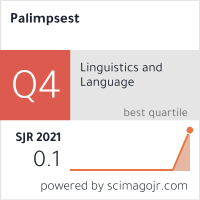THEORIES OF BORROWING, LOANWORD TYPOLOGY AND LOANWORD ADAPTATION
DOI:
https://doi.org/10.46763/PALIM21116109kAbstract
According to the theories of linguistic borrowing described below, one can conclude that linguistic borrowing is a process made feasible through the recognition of its own elements on a phonetic, morphological and semantic level of the word borrowed in language B. The following four key elements are considered as the reasons for linguistic borrowing: the language’s prestige, the need for innovation in the borrowing language, the geographical contact, and bilingualism. In the context of the derivatives which form as a result of the linguistic borrowing, an overview is presented of the relevant loanword definitions suggested by the renowned linguists Lewandowski, Stedje, and Nikolovska in order to illustrate loanword adaptation with examples of loanwords from English, French and German which have entered the dictionary of the Macedonian Language, and which can be full, partial or zero, depending on phonetic, morphological and semantic parameters, following the example of the prominent linguist Haugen. By marking the phonetic changes of the loanwords which have entered the Macedonian language, their adaptation using Macedonian phonemes will be presented.
Keywords: borrowing process, loanword, loanword adaptation, German, French, English.


